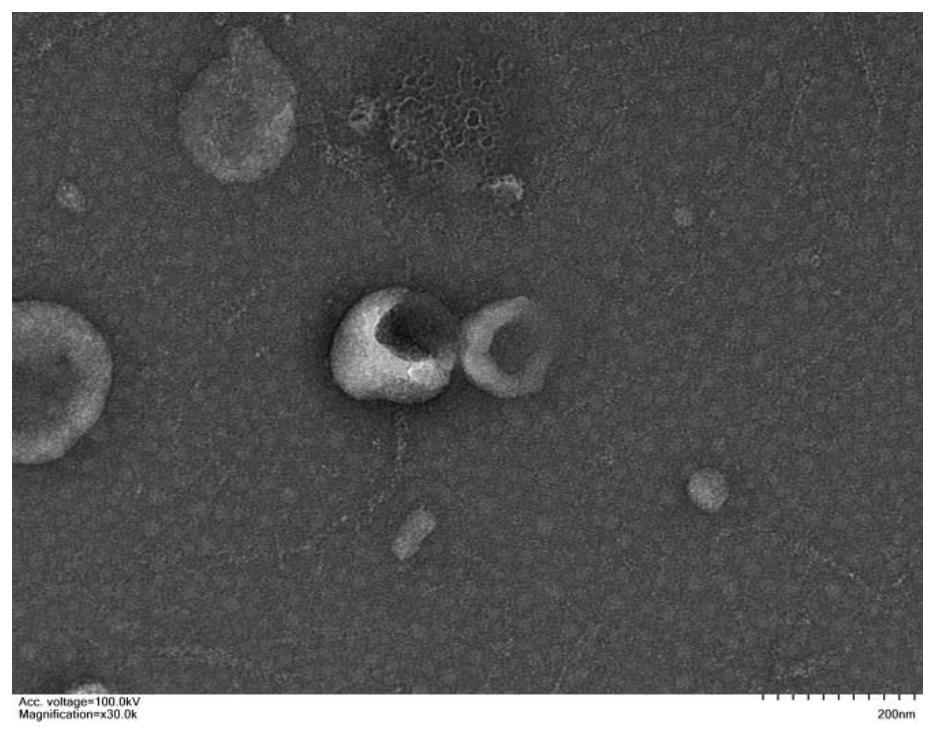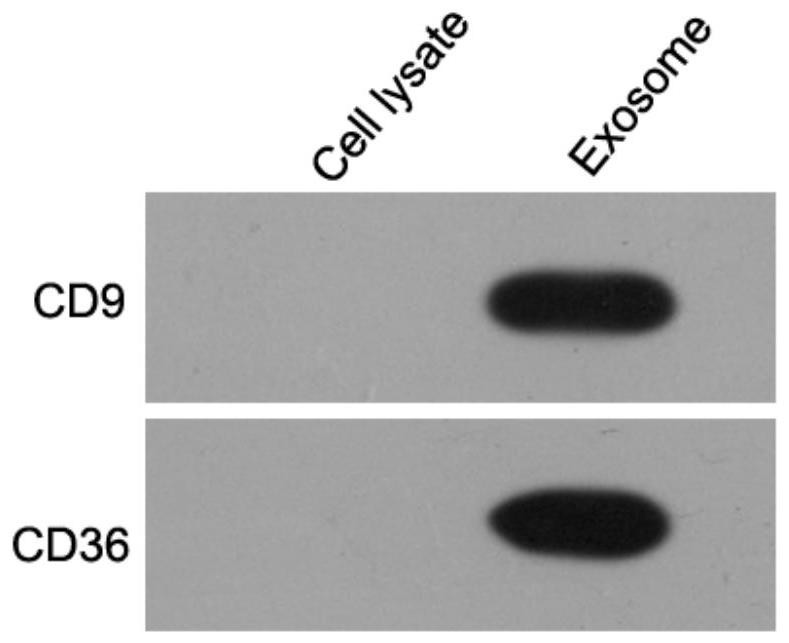Gene-loaded exosome as well as preparation method and application thereof
A technology of exosomes and genes, applied in the field of biomedicine, can solve problems such as unsatisfactory effects and limited prevention and treatment methods for heterotopic ossification
- Summary
- Abstract
- Description
- Claims
- Application Information
AI Technical Summary
Problems solved by technology
Method used
Image
Examples
preparation example Construction
[0033] The embodiment of the present invention also provides a method for preparing the above-mentioned gene-carrying exosomes, comprising the following steps:
[0034] Step S1: reacting phospholipid polyethylene glycol succinimide ester with CD34 antibody to synthesize an exosome treatment solution.
[0035] Step S2: Dispersing secreted exosomes in phosphate buffered saline solution, adding the exosome treatment solution and incubating at room temperature to obtain exosome carriers.
[0036] In the embodiment of the present invention, the exosome membrane is mainly composed of lipid membrane, so fat-soluble compounds are easy to integrate into the exosome membrane. The present invention synthesizes DSPE-PEG-AbCD34 by conjugating CD34 antibody to phospholipid polyethylene glycol succinimide ester (DSPE-PEG-NHS), and then treats exosomes with DSPE-PEG-AbCD34 to convert lipophilic DSPE Fused to the exosome membrane, PEG-AbCD34 is thus carried to the surface of the exosome to ob...
Embodiment 1
[0059] Example 1 Preparation and Characterization of Exosome-DSPE-PEG2000-AbCD34
[0060] In this example, exosomes were isolated from the culture medium of mouse aortic endothelial cells by mixing 5 mL of phospholipid polyethylene glycol succinimide ester (DSPE-PEG2000-NHS) (0.1 M) with 10 uL of excess CD34 Antibody (AbCD34) (1mg / mL) was reacted at room temperature for 24h to synthesize exosome treatment solution (DSPE-PEG2000-AbCD34). Then the prepared exosomes were dispersed in 5 mL of PBS, and the protein content was adjusted to 50 mg / mL, and 0.1 mL of DSPE-PEG2000-AbCD34 solution with a concentration of 20 mg / mL was added to 2 ml of exosome dispersion liquid, blown gently Disperse the mixture and incubate at room temperature for 1 h. Then, transfer the dispersion to a special centrifuge tube, and ultracentrifuge at 120,000 rpm at 4°C for 70 min. Aspirate the upper layer solution to remove unbound DSPE-PEG2000-AbCD34, and the resulting precipitate is the exosome carrier ...
Embodiment 2
[0063] Example 2 Detection of biocompatibility, stability, targeting and cell internalization of Exosome-DSPE-PEG2000-AbCD34
[0064] Biocompatibility, stability, targeting, and cellular internalization are important properties of gene carriers. The present invention uses the CCK-8 method to detect the effects of different concentrations of Exosome-DSPE-PEG2000-AbCD34 on the viability of mouse aortic endothelial cells, and the results show that all concentrations of Exosome-DSPE-PEG2000-AbCD34 have no effect on the survival rate of the cells ( Figure 5 ).
[0065] Further, the present invention tested the stability of Exosome-DSPE-PEG2000-AbCD34 at 4°C and 37°C, and the results showed that Exosome-DSPE-PEG2000-AbCD34 could be stored stably at 4°C and 37°C for at least 8 days ( Image 6 ).
[0066] Further, the present invention observed the targeting effect of Exosome-DSPE-PEG-2000AbCD34 on mouse aortic endothelial cells through laser confocal microscopy, and the results s...
PUM
 Login to View More
Login to View More Abstract
Description
Claims
Application Information
 Login to View More
Login to View More - R&D
- Intellectual Property
- Life Sciences
- Materials
- Tech Scout
- Unparalleled Data Quality
- Higher Quality Content
- 60% Fewer Hallucinations
Browse by: Latest US Patents, China's latest patents, Technical Efficacy Thesaurus, Application Domain, Technology Topic, Popular Technical Reports.
© 2025 PatSnap. All rights reserved.Legal|Privacy policy|Modern Slavery Act Transparency Statement|Sitemap|About US| Contact US: help@patsnap.com



